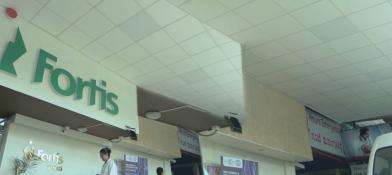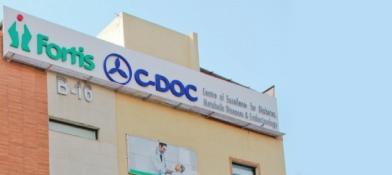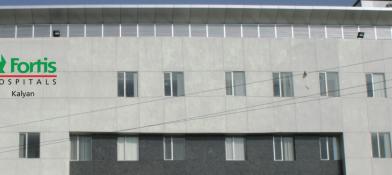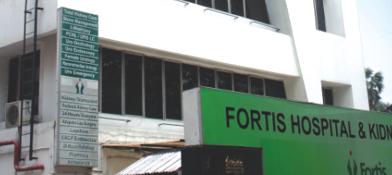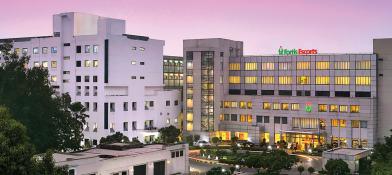Arthroscopy: Minimally Invasive Joint Surgery
Arthroscopy is a revolutionary, minimally invasive surgical procedure that allows orthopedic surgeons to visualize, diagnose, and treat a wide range of problems inside a joint. The name is derived from two Greek words: arthro (joint) and skopein (to look). Often referred to as keyhole surgery, this technique avoids the need for large, open incisions. Instead, a surgeon uses a small, high-definition camera called an arthroscope, along with specialized, pencil-thin instruments, to perform complex procedures through tiny incisions, or portals.
This approach offers significant benefits over traditional open surgery, including reduced post-operative pain, a lower risk of complications, and a significantly faster recovery and rehabilitation process. Arthroscopy has transformed the treatment of joint injuries and conditions, enabling countless patients, from professional athletes to active individuals, to return to their desired activities sooner and with better outcomes.
What is Arthroscopy?
Arthroscopy is a surgical technique that provides a surgeon with a clear, magnified view inside a joint, allowing for both precise diagnosis and targeted treatment in a single procedure. The technology at the heart of the procedure is the arthroscope, a thin, rigid instrument, typically only a few millimeters in diameter. It contains a system of fiber-optic lenses and a high-intensity light source, all connected to a high-definition video camera.
The surgical process involves:
- Creating Portals: The surgeon makes two or more very small incisions (portals), usually less than a centimeter long, around the joint.
- Joint Distension: A sterile, clear fluid (saline solution) is continuously pumped into the joint. This gently expands the joint capsule, creating space for the surgeon to work and providing a crystal-clear view by washing away any bleeding or debris.
- Visualization: The arthroscope is inserted through one portal. The live video feed is displayed on a large, high-definition monitor in the operating room, giving the entire surgical team a magnified and detailed view of the bones, cartilage, ligaments, and tendons inside the joint.
- Surgical Intervention: The surgeon inserts specialized, miniature surgical instruments through the other portals. These instruments are designed to perform specific tasks, such as cutting (scissors), grasping (graspers), removing tissue (shavers), smoothing bone (burrs), and passing sutures.
- Completion: Once the repair or treatment is complete, the instruments are removed, the fluid is drained from the joint, and the small incisions are closed with one or two stitches or surgical tape and covered with a sterile dressing.
This minimally invasive approach allows for intricate surgical work to be done with minimal disruption to the surrounding healthy muscles and tissues, which is the key to its success.
When is Arthroscopy Recommended? (Common Procedures by Joint)
Arthroscopy can be used to treat a vast array of conditions affecting nearly every joint in the body. It is the preferred method for most intra-articular (inside the joint) procedures.
Knee Arthroscopy:
The knee is the most common joint to be treated with arthroscopy. Procedures include:
- Meniscus Surgery: Repairing a torn meniscus (the C-shaped shock-absorbing cartilage) or trimming away the damaged portion (meniscectomy).
- Ligament Reconstruction: Arthroscopy is used to perform reconstructions of torn ligaments, most commonly the Anterior Cruciate Ligament (ACL) and Posterior Cruciate Ligament (PCL).
- Articular Cartilage Repair: Treating damaged cartilage on the joint surfaces through techniques like microfracture (stimulating new cartilage growth) or cartilage transfer (OATS procedure).
- Removal of Loose Bodies: Excising fragments of bone or cartilage that may be floating in the joint, causing pain and locking.
- Patellar (Kneecap) Realignment: Performing a lateral release or other procedures to correct kneecap tracking issues.
- Synovectomy: Removing inflamed joint lining (synovium) in conditions like rheumatoid arthritis.
Shoulder Arthroscopy:
The shoulder is the second most common joint for arthroscopic surgery. It is highly effective for:
- Rotator Cuff Repair: Re-attaching torn tendons of the rotator cuff muscles to the bone.
- Shoulder Impingement Syndrome: Performing a subacromial decompression, which involves removing bone spurs and inflamed tissue to create more space for the rotator cuff tendons.
- Shoulder Instability and Dislocation: Repairing a torn labrum (the cartilage rim of the shoulder socket), such as in a Bankart repair for dislocations or a SLAP lesion repair.
- Biceps Tendon Issues: Repairing or releasing the long head of the biceps tendon.
- Frozen Shoulder (Adhesive Capsulitis): Performing a capsular release to cut the tightened joint capsule and restore motion.
Hip Arthroscopy:
A more technically demanding procedure, hip arthroscopy is used to treat conditions within the hip joint, including:
- Femoroacetabular Impingement (FAI): Reshaping the bone of the hip's ball (cam lesion) or socket (pincer lesion) to relieve painful pinching.
- Labral Tears: Repairing or trimming the torn labrum (the cartilage ring of the hip socket).
- Removal of Loose Bodies.
Ankle, Elbow, and Wrist Arthroscopy:
Arthroscopy is also highly effective for smaller joints:
- Ankle: Treating cartilage damage, removing bone spurs that cause impingement, and removing loose bodies.
- Elbow: Treating tennis elbow, removing loose bodies, and addressing stiffness.
- Wrist: Diagnosing and treating ligament tears, and addressing wrist impingement.
Understanding the Underlying Conditions
Meniscus Tears (Knee)
The menisci are two C-shaped pieces of tough, rubbery cartilage that act as shock absorbers between your femur (thighbone) and tibia (shinbone). A meniscus can be torn during activities that involve forceful twisting or rotation of the knee, often when the foot is planted. In older adults, tears can occur from simple wear and tear (degenerative tears). A torn meniscus can cause pain, swelling, stiffness, and a sensation of the knee locking or catching.
Rotator Cuff Tears (Shoulder)
The rotator cuff is a group of four muscles and their tendons that surround the shoulder joint, keeping the head of your upper arm bone firmly within the shoulder socket. A rotator cuff tear occurs when one of these tendons is torn from the bone. This can happen from a sudden injury, like a fall, or more commonly, from gradual wear and tear and overuse over time. A tear can cause significant pain, weakness, and a loss of the ability to lift your arm.
Risk Factors & When to Consider Surgery
You should consult with an orthopedic surgeon if you are experiencing persistent joint problems that are not improving with conservative treatment. Consider seeking a surgical opinion if you have:
- Joint pain that limits your daily activities.
- A feeling of instability, locking, or catching in a joint.
- Swelling and stiffness that does not resolve with rest and medication.
- Loss of motion or weakness in a joint.
- A specific injury that resulted in a pop or an immediate inability to use the joint.
An orthopedic specialist will perform a thorough physical examination and order imaging studies like X-rays and an MRI to accurately diagnose the problem and determine if arthroscopic surgery is the right option for you.
Our Specialists
Our orthopedic departments are staffed by highly skilled surgeons who are leaders in the field of arthroscopy and sports medicine, combining advanced surgical techniques with a commitment to patient-centered care.
Dr. Amite Pankaj Aggarwal
PRINCIPAL DIRECTOR & HOD - ORTHOPAEDICS | Fortis Shalimar Bagh
Dr. Narayan Hulse
PRINCIPAL DIRECTOR ORTHOPAEDICS | Fortis BG Road
Dr. Gurinder Bedi
PRINCIPAL DIRECTOR & HOD - ORTHOPAEDICS | Fortis Vasant Kunj
Dr. Manoj Miglani
PRINCIPAL DIRECTOR ORTHOPAEDICS | Fortis Vasant Kunj
Patient Stories
“I had been living with a catching, painful knee for years due to a torn meniscus from an old football injury. I was hesitant to have surgery because I feared a long recovery. My surgeon at Fortis explained the arthroscopic procedure in detail. The surgery was done as a day-care procedure, and I was walking with support the same evening. The recovery, guided by an excellent physiotherapy team, was so much faster than I ever expected. Getting rid of that constant clicking and pain has been incredible”. — A. Singh, 35, Gurugram
“The persistent, aching pain in my shoulder made it impossible to even lift a kettle or comb my hair. An MRI revealed a significant rotator cuff tear. I underwent an arthroscopic repair. While the post-operative rehabilitation was intensive and required a lot of hard work, it was worth it. Six months later, I have regained almost all of my strength and motion, and most importantly, I am free from that chronic pain that had been draining my energy for so long. The minimally invasive approach made the initial recovery much more manageable”. — S. Iyer, 58, Delhi
The Arthroscopic Procedure: A Detailed Walkthrough
The Initial Consultation
Your journey begins with a comprehensive consultation where your surgeon will review your symptoms, conduct a physical examination, and analyze your imaging studies (X-ray, MRI). They will discuss your diagnosis, explain the specific arthroscopic procedure recommended for you, detail the potential risks and benefits, and answer all of your questions.
Preparing for Your Surgery
- You will have a pre-anesthetic check-up to ensure you are medically fit for surgery.
- You must inform your surgeon of all medications you are taking, especially blood thinners, which will need to be stopped.
- You will be required to fast for at least eight hours before the procedure.
- Arrange for someone to drive you home, as you will not be able to drive after receiving anesthesia.
The Day of the Surgery
- Anesthesia: You will meet with the anesthesiologist who will discuss the best option for you. This could be general anesthesia (you are asleep) or a regional nerve block, which numbs the entire limb.
- Positioning: You will be positioned on the operating table in a way that provides the best access to the joint.
- The Procedure: The surgeon will make the small portals, fill the joint with sterile fluid, and perform the necessary diagnostic and therapeutic steps using the arthroscope and specialized instruments.
- Closure: At the end of the procedure, the fluid is drained, the incisions are closed, and a sterile dressing is applied. You may also be placed in a brace or sling.
After the Procedure: Recovery and Rehabilitation
Recovery after arthroscopy is highly dependent on the specific procedure performed. A simple diagnostic scope or a minor debridement will have a much faster recovery than a complex ligament reconstruction or rotator cuff repair. However, the general principles remain the same.
The Immediate Post-Operative Period (First few days)
- The primary focus is on the RICE protocol: Rest, Ice, Compression, and Elevation to control pain and swelling.
- You will be given pain medication to manage discomfort.
- You will begin very gentle range-of-motion exercises as instructed by your surgeon or physiotherapist.
The Rehabilitation Phase (Weeks to Months)
- Physiotherapy is essential: This is the most critical component of your recovery. A dedicated physiotherapy program is required to restore your joint's motion, strength, and function.
- Gradual Progression: Your rehabilitation will follow a structured, phased protocol. You will gradually progress from gentle motion exercises to strengthening, balance training, and finally, to sport-specific activities.
- Timeline: Full recovery can range from a few weeks for a minor procedure to six to nine months or more for a complex reconstruction like an ACL repair. Adherence to your physiotherapy plan is the key to a successful outcome.
Benefits of Arthroscopy vs. Open Surgery
The advantages of arthroscopy are significant:
- Smaller Incisions and Less Scarring: Results in a better cosmetic outcome.
- Less Post-Operative Pain: Minimal disruption to surrounding muscles and tissues leads to less pain.
- Lower Risk of Complications: Reduced rates of infection and stiffness.
- Faster Recovery Time: Allows for a quicker start to rehabilitation and an earlier return to work and activities.
- Often an Outpatient Procedure: Many arthroscopic surgeries are performed on a day-care basis, allowing you to go home the same day.
Myths vs Facts
Take the Next Step
Living with a painful or unstable joint can severely limit your ability to enjoy life, work, and recreational activities. Arthroscopy offers a powerful, minimally invasive solution to a wide range of joint problems, providing a path back to an active and pain-free lifestyle.
If you are struggling with a joint condition, a consultation with an experienced orthopedic surgeon is the first step toward an accurate diagnosis and a personalized treatment plan that can restore your function and well-being.
CTA: Book an Orthopaedics & Sports Medicine Consultation | Get a Second Opinion
Frequently Asked Questions
1. How long does an arthroscopic procedure typically take?
Ans. Most arthroscopic surgeries take between 30 minutes and two hours, depending on the complexity of the procedure and the specific joint involved.
2. Will I need to stay in the hospital overnight?
Ans. Many arthroscopic procedures, such as a simple knee meniscectomy, are performed as day-care surgery, meaning you can go home the same day. More complex procedures, like a major ligament reconstruction, may require a one-night hospital stay for pain management and observation.
3. What type of anesthesia is used for arthroscopy?
Ans. This depends on the joint and the procedure. It can range from a regional nerve block (which numbs the limb) combined with sedation, to spinal anesthesia, or general anesthesia (where you are completely asleep).
4. When can I start physiotherapy after the surgery?
Ans. Physiotherapy often begins very soon after the surgery, sometimes as early as the next day. An early start to a structured rehabilitation program is crucial for the best possible outcome.
5. How much pain will I have after the procedure?
Ans. You will have some post-operative pain, but it is typically much less than with open surgery. It will be managed effectively with a combination of nerve blocks, oral pain medication, and the application of ice.
6. When can I expect to return to work?
Ans. This is highly variable. For a desk job after a simple knee arthroscopy, you might be back in a week. For a physically demanding job after a complex shoulder repair, it could be three to four months or longer.
7. Are there any risks associated with arthroscopy?
Ans. The risks are low but include infection, blood clots (DVT), swelling and stiffness of the joint, and very rarely, damage to blood vessels or nerves around the joint. Your surgeon will discuss these risks with you in detail.
8. Can all joint problems be treated with arthroscopy?
Ans. No. While arthroscopy is incredibly versatile, some conditions, such as total joint replacement for severe arthritis or the repair of complex fractures, still require traditional open surgery. Your surgeon will determine the most appropriate approach for your specific condition.












